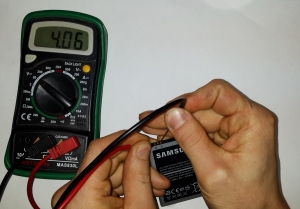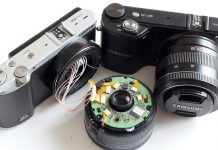In detail: do-it-yourself Samsung phone repair is not included from the real wizard for the site my.housecope.com.
And then thoughts scatter at once. The fact is that the cause of this malfunction can be either a trifle, such as a discharged phone battery, or very serious damage to both the software part and the phone board. Or even damage incompatible with maintainability. Diagnostics of this malfunction can be as easy as it is very time consuming and extensive. Each master has his own algorithm (sequence) for carrying out verification operations and control measurements. Someone immediately climbs into the jungle (for example, flood the entire board with flux and solder all the chips, or start flashing the phone at a run). The main thing is to understand how to distinguish software from hardware faults.
Any diagnostics should start with checking the power supply. If you plan to turn on the phone for testing from a standard battery, you need to measure the charge level. It must be at least 3.6V. If the battery is discharged, it must be charged to the required level using the standard method (if the current state of the phone allows it) or using a universal charger. It is preferable to use a power supply unit for powering the phone, which provides at least 4V output voltage with an indicator of the consumed current. For more information on choosing a power supply unit and a Universal Charger, see the equipment and materials section.
Having set the required power supply voltage, respecting the polarity, we connect the crocodile clips to the contact terminals of the phone battery:
Without pressing the power button, we immediately look at the arrow of the ammeter of the power supply. If it is indestructible at the initial (zero) position or deviated slightly and immediately returned to its original position (there was a process of charging the capacitors to power the phone), then everything is in order in the primary power supply circuits of the phone. This means that there is no short circuit and increased consumption in the off state and you can try to turn on the phone with the power button.
| Video (click to play). |
If the needle of the ammeter deviates noticeably and shows not very high consumption (tens of milliamperes), this indicates, most often, that moisture has entered the inside of the phone. Moreover, this does not have to be complete or partial flooding of the phone with liquid. Sometimes it is enough to talk on the phone in the rain or pick up the phone with wet hands. Learn more about diagnosing phones after moisture exposure.
In the case of high consumption (hundreds of milliamperes, and more often 0.5 Amperes and above - up to the maximum possible), this is a clear sign of a short circuit in the primary supply circuits (battery circuit). As a rule, with such consumption, the “culprit” immediately heats up to a high temperature (barely holding the finger or not holding it at all). This fact helps well to find the malfunction. In 99% of cases, it is the faulty element that heats up. ATTENTION! Such a high percentage is typical for elements in the primary power supply circuits. For elements in secondary power circuits, other features!
In the primary, as a rule, GSM Power Amplifiers, power controllers, power converters (just for secondary power circuits), display and keyboard backlight power converters, memory card power converters, cameras, sound power amplifiers, separate battery charge controllers and separate capacitors parallel to the power supply.According to my statistics, all of the listed elements, except for the GSM Power Amplifier, fail in 90% of cases again due to exposure to moisture! As for amplifiers, they like to whitewash after drops and bumps of the phone. It is much less common.
With normal ammeter readings, press the power button and look at the consumption again.
It should be remembered that for the normal switching on of NOKIA phones from the power supply, it is necessary to connect the middle contact of the battery connector to the negative one (see the photo above!).
Under normal conditions, switching on occurs with the simultaneous execution of several operations (starting of secondary power supplies, initialization and software execution, self-test, etc.). At the same time, the ammeter readings very quickly fluctuate within 30 - 50mA until the phone's backlight and other modules are activated. Consumption rises to 100 - 300mA (for different phones in different ways; mainly for phones with large color displays). As soon as the phone is registered in the network, the consumption can grow up to 400mA for a short time. Learn more about the current consumption in different modes.
We press the power button, but there is no result - the ammeter needle stands dead in place. There are several reasons:
1. The power button is faulty... We find the power button on the phone's board and, depending on its design, proceed as follows:
- if the button is made separately from the rest of the keyboard and, as a rule, is placed on the top or side edge of the phone and has a body of this type
then we check the functionality of the button by pressing and simultaneously measuring the resistance. It happens that over time, the internal contacts of the button oxidize or wear out and, accordingly, such a button, when pressed, gives a large resistance instead of a good circuit. If the button is normal, we check the quality of the soldering of the contact pins on the board. Sometimes the violation of soldering can be seen with the naked eye, and sometimes there are imperceptible microcracks that instantly oxidize and contact is almost impossible;
- if the button is made on a common matrix of the keyboard under an elastic adhesive film, which holds the springy steel plates strictly in place - membranes (round or elongated)
then carefully peel off the film with buttons and examine the surface of the contact pads of the button on the board and steel round membranes for the presence of oxides. If there are any, they must be removed. This is best done with an eraser - a pencil and brush or a regular eraser.
2. The circuits of the power button are faulty... The phone's power button is most often associated with the power controller through board interlayers. Often in these circuits there are discrete elements (resistors, varistors, capacitors), which are in close proximity to the power button, although the exact location must be viewed according to the diagram. If the track that connects the power button to the power controller is cut, the phone will not turn on. This mainly happens when the phone is dropped. At the moment of impact, the board and all elements of the phone experience a strong overload. Soldering problems occur, especially for large BGA chips. In such cases, soldering of these chips or complete dismantling with rolling (reball) of the terminals and subsequent installation helps. Sometimes impacts are accompanied by breaks of contact pads and board tracks. In such cases, the board should be replaced with a new one.
As for discrete elements. If there is a resistor in series in the switching circuit, it is worth checking its presence and the integrity of the soldering. Sometimes they come off at the moment of impact, but most often they are torn off by the users themselves, when they begin to press the power button with addiction and it will certainly come off and demolish everything in its path.Or the torn off button falls out of the phone and “advanced” users start turning on the phone by closing the contact pads with the help of improvised means (the tip of a knife, scissors, etc.). Accordingly, both the elements and the board suffer.
In addition to resistors, varistors and capacitors are common culprits. Only if they fail, another, completely opposite defect appears - the phone itself turns on when power is applied or as soon as the battery is inserted, since the varistor and capacitor are parallel to the power button. When moisture gets into the phone, these elements (especially typical for a varistor) begin to shorten. The phone perceives this as pressing a button.
Do not forget about phones - clamshells, sliders and the like. If the power button is not on the main board, the same board-to-board loop may be to blame. This defect occurs quite often and is eliminated by replacing the loop.
Checking the circuits of the power button is checked by a continuity tester or by measuring the voltage at the contacts of the power button. When the control panel is in good working order, the voltage of the power button of most cell phones is about 4V. For Siemens phones of the C65, CX65 series and the like, the voltage of the power button is about 1.95V.
3. Defective power controller or violation of its soldering... Failure of the gearbox is a rather rare case. Usually, in such cases, the consumption, on the contrary, is very high and is accompanied by a characteristic heating of the chip. Malfunctioning soldering is much more common. As mentioned above, soldering or rolling of the BGA chip helps.
If the voltage on the power button is present, but there is no reaction to pressing it, you should use an oscilloscope to check the generation of the clock generator built into the power controller (or processor) with a frequency of 32 kHz. The diagram is depicted as follows:
On the phone board, the quartz resonator looks like this:
Case execution of quartz is varied. In addition to what is indicated in the photo, the phones also contain:
These elements are quite fragile and, when the phone falls, they often collapse, although outwardly they look completely intact.
By setting the appropriate parameters of the oscilloscope (TIME / DIV = 20uS, V / DIV = 500mV), we measure the generation. On the oscilloscope screen, we should see the following signal:
In the absence of this signal, it can be assumed that the quartz resonator is faulty and must be replaced. However, before replacing, it is necessary to make sure that there is a constant supply voltage of the quartz, as a rule, 0.3 - 0.5V. Otherwise, it is necessary to solder / replace the power controller (processor).
4. Defective secondary power supplies - power supply of the processor, memory and stop. devices. In simpler phones, these supply voltages (2.8V, 1.8, etc.) are implemented using the same power controller. In more complex (smartphones), with several processors and types of memory, as well as a variety of built-in devices, secondary power supplies are made in the form of separate (most often pulse) DC / DC converters. The most common breakdown is failure due to moisture ingress. Less often - blows and short circuits. They are checked by careful visual inspection and measurement of the corresponding voltages according to the diagram.
Examples of secondary power supplies:
These fragments of the diagrams indicate the input voltage VBAT (power supply voltage of the telephone battery) and the output voltage - VCORE, VDDR_APE, VIO.
5. Malfunctions of the mobile phone software... If, when you press the power button, the consumption of the phone rises to 20-30mA and immediately drops and no more action occurs, then we can assume that the malfunction lies in the malfunction of the phone software. This fact is carefully verified by testing or restoring the software part using the programmer.
To begin with, it is strongly recommended that you familiarize yourself with at least the basics of radio electronics.The fact is that the repair of mobile phones is closely related to theoretical knowledge in this area. For example, if you need to replace a resistor (this is a passive current-limiting radio electronic component), then you definitely need to know its labeling, resistance, power dissipation, temperature coefficient, etc. With other owls, it is not very advisable to repair mobile phones without knowing Ohm's law. There are a huge number of books and manuals on the topic of radio electronics, as well as thematic sites on the Internet. But this is not enough. Mobile phones are digital devices, not analog ones. Consequently, all parts and components used for the production of the latter have differences among themselves. For example, for analog devices, surface mounting technology is mainly used, and for digital devices, surface mounting. The latest technology is called SMT (surface mount technology). It also translates as "surface mount technology". And the components used in this technology are called SMD (surface mount device).
Also, there is no analog signal in digital electronics, because it is actually digital. Consequently, all digital devices have their own types and levels of programming. These are just a few of the differences between analog and digital technology. But even this is enough to scare a newbie away. But there is no need to despair here. Everything is much easier than it seems. A lot of that frightening information is not needed when repairing mobile devices. But if you are planning to seriously tackle this business, then it is strongly recommended to study analog and digital radio electronics.
Now we come to the main goal of this article. So, now you will be described in detail the procedures for technical repair of mobile phones and types of repair devices.
In order to repair a cell phone, including repairing Nokia, Samsung, Sony-Ericsson, LG, Motorola, the first thing is to determine the cause of the failure of the mobile device and identify the component, assembly, module or part that has failed. For this, the knowledge that is described above is just needed. Usually, the breakdown of a mobile phone is caused by improper operation or loss of functionality of external devices. For example, in the first case, the phone fell into the water by negligence. To restore it, complete disassembly and thorough drying are required. After that, you need to use a soft-bristled brush to clean the phone's printed circuit board with a special cleaning agent or 96% alcohol solution. In the second case, the LCD, speaker, microphone, keyboard, etc. are out of order. As a rule, in most cases, such parts cannot be repaired and must be replaced. But if there was damage to the surface (soldered) parts on the printed circuit board, then a professional approach and experience are required. In addition, for this type of repair, you will need a diagram of assemblies, modules and components of the printed circuit board of a mobile phone.
In order to start the repair procedure, the phone must be disassembled.
To open a mobile phone without causing cosmetic damage to it, you need to acquire special tools for opening them. They allow you to open the phone case accurately and as efficiently as possible without causing defects. As a rule, these instruments are sold in sets, each item of which is responsible for its own specific opening. Such kits are not difficult to find in specialized stores. In addition, they come in various types. The difference is the functionality and the price.
You also need a specialized set of screwdrivers for mobile phones. You don't need to save on this. The more specific number of attachments you have, the more chances you will have to unscrew the screws without breaking the edges.
Further, in order to diagnose the phone for its malfunction, you will need a good digital multimeter.It can be used to measure AC and DC voltage and current, resistance, capacitance of capacitors, coefficient of transistors, diode state, continuity of circuits, sections of circuits or nodes, temperature. With skillful use and knowledge of some physical laws, they can find faults in the circuit. The range of multimeters is enormous. The difference is usually in functionality and price.
We also need a laboratory power supply or power supply. With it, it will be possible to set the specified voltage and current. You will need it very often when carrying out repair work, because it will be inconvenient to substitute the rechargeable battery for testing, over and over again. Modern power supplies are equipped with current stabilization and protection functions, as well as a large number of all kinds of clamps and probes for various cases.
Soldering equipment and fixtures. To carry out soldering work, you need a soldering station. Their variety is infinitely large, and the choice is determined by the price and functional range. There are combined soldering stations that combine both a heating soldering iron with temperature control and a hot air dryer, which also has the function of adjusting temperature and air flow.
A hot air dryer is usually required for mounting and dismounting SMD components, as well as integrated circuits made in a BGA package.
Also, when carrying out soldering work, you will need a device for the bottom heating of printed circuit boards. The fact is that when installing or dismantling, for example, integrated circuits (chips), there is a risk of overheating and failure. When using a heating device, on which the printed circuit board of the mobile phone is placed and fixed, the board is rationally heated. And already when the board is heated, you can start assembling or disassembling components without fear of their breakage. this procedure takes place in a few seconds.
Antistatic thermo-tweezers are also useful for soldering work. It is very convenient to use it to dismantle some of the components.
Since you will be faced with soldering work on the installation / dismantling of integrated circuits, you will need a vacuum manipulator. This device is manual and automatic. It is designed to place the chips with the contact pins on the surface of the printed circuit board of the mobile device as accurately, efficiently and conveniently as possible. It is inconvenient to do this with tweezers, especially since there is a high probability of “kill” the microcircuit with an uncalculated pressure. This will never happen with a vacuum manipulator.
Also in the work you need a desoldering pump. With the help of it, you can easily perform soldering by removing the molten solder.
Optics. Parts and components of mobile phones are measured in micrometers and nanometers. It is clear that working without special magnifying devices is very problematic and harmful to vision. In these cases, it is strongly recommended to acquire a 40 diopter technical microscope (not to be confused with a biological one). You will also need a backlit tabletop magnifier. It is not convenient to work with a microscope in all cases, and a desktop magnifier is convenient to use almost always when ultra-high magnification is not required. Mounting magnifying glasses or forehead binocular glasses also do not hurt.
To carry out washing, cleaning all kinds of components and printed circuit boards from dirt, oils, fats, solder, plaque and rosin, you need an ultrasonic bath. It performs ultrasonic cleaning very efficiently and safely.
Other tool. Among other installation tools and accessories, you will need a mounting fixing table, with which you can easily and securely fix the printed circuit board for repair work.Be sure to have a variety of tweezers, mounting awls, round-nose pliers, pliers, long-nose pliers, wire cutters with you. You can add solder paste, flux, solder, rosin, cleaners, ultrasonic cleaner and other consumables to this list.
Where to get parts and components for repair? Of course, you can buy them in specialized stores, but it is best to buy broken phones. Since in some cases, it will be very problematic to find some parts, and it will not be difficult to buy, for example, a broken phone, which contains the necessary part, moreover, at a very low price.
Well, here we are with you and got acquainted with the minimum that a mobile device repair engineer should have. Of course, knowledge and experience will come with time, as theoretical and practical skills are developed. Read books on electronics, if possible, sign up for special training courses in the repair of mobile phones, communicate with people who have experience in this area, visit specialized forums on specific topics, where people are always ready to help.
In general, great success to you in your mobile phone repair business!
More information for learning self-repair of mobile phones HERE.
Let's consider one of the main reasons for the failure of a mobile phone: "various liquids hitting the board" does not turn on, a white screen or some buttons do not work. Of course, before opening the case, you need to know the cause of the breakdown. If one of the above is written, read on.
We open it, conduct a visual inspection for the presence of corrosion, dirt and other unnecessary substances.
First of all, we remove all plastic parts, in general, everything that can be removed is detached. Do not forget about the film with membrane-type keyboard buttons, we also peel it off (this is on other models, on ours the keyboard board is disconnected).
We take a cleansing liquid (such as alcohol, Kolosha gasoline, cologne), I use Isoprapanol, it does not have an unpleasant odor like Kolosha.
We take a toothbrush, who doesn't mind a new one, dip it in alcohol, and clean the board until it looks like new - especially the contacts for the display, the USB connector. Do not press hard, some components may be demolished.
We cleaned it, now we take the flux, take a brush, smear it with flux near the microcircuits (more), put the hair dryer at 325 degrees and warm up all the microcircuits in a circle and in the middle, the distance from the outlet of the tip (nozzle) of the hair dryer to the surface of the microcircuit is 1.5 cm. it is better and more economical to take a medium diameter.
We heat to such an extent that the tin melts at the components located around the perimeter (adjust the temperature to 330 degrees). Very, very neatly shake the microcircuit with a needle so that it moves a little. It is important not to wobble too much, otherwise it will slip off the contacts, and so on with all the microcircuits not glued (without compound). We also warm up the filters, in order to remove the flux, you can use an ultrasonic bath, but we will do it differently.
We pour alcohol under all the microcircuits without a compound, hold it for a little so that the alcohol has time to collect all the dirt. Now we take the hair dryer from the soldering station and blow it under the microcircuits. Blowing alcohol out from under the microcircuits in this way, we do not need it there. The temperature of the hair dryer should be for warming up, not for soldering, it is in the range from 260 to 290 degrees, depending on which station.
Done, let's move on. Now let cool and collect. If the breakage is fixed after assembly, then "Hurray, everything is ready." If, nevertheless, the white screen and non-short buttons do not work, you need to replace the filters or put jumpers, but that's another story. The most important parts that can fail after water or after a fall (impact) are filters (so-called glasses), they look like this.


You need to do the same with them as with the rest of the microcircuits, only solder these places more carefully.Warm up, stir, about the flux (do not forget to apply) with it, the components will not get off the contacts. Now everything seems to be. What we have done only applies to breakage due to moisture getting inside the phone. Other breakdowns, such as "does not charge" or "the network does not catch" - this cannot be fixed, components will need to be replaced. More about this in future publications. Best regards, OPA.
After some time, the camera stopped turning on and it became impossible to view photos in large size. In this state, he had to arrive for three years, until finally my hands reached him.
To repair my U600 phone I needed:
- Screwdriver Set,
- sharp knife
- tweezers,
- flex cable Samsung U600 connecting two parts of the phone.
In order not to loose the bolts, you can use a magnet. In my case, I only managed to buy a loop, although in a worse scenario I would have to buy a loop with touch buttons as well, but I managed to bring it back to life.
Recharge the battery before you start repairing your cell phone. After you have recharged the battery, remove the back cover and take out the battery.
Do not forget about one more important point when repairing phones, which is often talked about by masters, this is static electricity. They say that because of it, the failure of some elements of the phone is possible. And in order not to buy a static bracelet, we will recall the physics course and before disassembling the phone it is better to do a wet cleaning in the room, that is, to wash the floors and wipe the table on which the repair will be carried out with a damp cloth. At the same time, there should be no visible traces of water on the table. Such a procedure should be carried out after a while during the entire repair and you can not worry about static electricity.
We take the knife further and carefully pry off the cover under which the bolt is hidden. The master who repaired this phone for the first time unfortunately damaged the cover.
And unscrew the bolt.

Then we unscrew 4 more bolts holding the phone case. And taking hold of the part of the body in the area of the flashlight, remove it.

The next step is to remove another cover from the end of the case, also prying it off with a knife.
And we unscrew the two bolts located at the edges and remove this part of the phone case.
Now we unscrew the six bolts that hold the case with the keyboard.
Disconnect the cable going to the keyboard and microphone by lifting the clamp that holds it and using tweezers to remove it from the connector on both sides.
Now we carefully take out the board and turn it over, where we can see the ill-fated loop due to which the phone's display did not work. With a knife, slowly from the side of the board, we pry the cable over the case with connectors. In no case should you remove it by prying it by the cable itself, since the case with contacts can come off the cable, and if the cable was new, it will become unusable. Having disconnected the ribbon cable, you can safely remove the board and the part of the case on which it was installed by pulling the ribbon cable through the hole.

Next, unscrew two more bolts on the other part of the phone case and move the metal part of the case as shown in the figure.

Now we remove the cable from the connector marked with number 2.

This disassembly of the phone Samsung U600 has finished the next step of the phone repair.
The assembly of the phone is carried out in reverse order, with minor nuances. Install a new ribbon cable in connector 2 and fix it with a latch. Now we take the part of the phone case, on which the sliding mechanism is installed, and by placing it vertically, we install the power button of the phone in its place.Holding this part of the case in the same position, take the second part, push the cable into the opening and align both parts of the phone case. In order for them to come together, you need to move the slider mechanism a little to the side. When both parts are aligned, tighten the two bolts.
The part of the phone with the display is assembled, we take the part of the case with the keyboard and push the cable through the hole in this part of the case.
We install the board on which the sim card is located and connect our cable from another part of the phone and the cable from the keyboard and speaker to it.
We tighten the body with six bolts to the sliding mechanism.
Install the lower part of the phone case and screw it up. Then we install a decorative plug from the end.
We install the last part of the phone case in place and screw it on.
We install the SIM card battery and check the phone. If all the work is done correctly, the phone will work without problems.
"I do it myself - I'll tell you how to do it for you!"
Antivirus Is a special program that allows you to protect your phone, computer, etc. from attacks of all kinds of malicious programs.
 How to solder the micro usb connector on a tablet, phone, netbook, laptop with your own hands?
How to solder the micro usb connector on a tablet, phone, netbook, laptop with your own hands?
Now in devices you can often find usb connectors (u-es-bi, English Universal Serial Bus - "universal serial bus"). Due to accidental mechanical damage, for example, while the device is in charging mode, such a malfunction is often encountered - such as a break in the micro usb connector. You will learn how to solder the micro usb connector yourself in the article below.
If the breakdown of a mobile phone has ceased to be a hypothetical phenomenon, but has become a harsh reality, then it is important to make a fundamental decision - whether to contact a service center with your problem or to do the repair yourself. Each of these options has pros and cons.
There are many workshops that repair Samsung phones in Moscow. It is difficult to choose one that is trustworthy. Parting with your hard-earned cash to pay for the work of specialists is even harder.
But is there an alternative to contacting the service? Is it possible to repair a broken mobile with your own hands? And won't you have to take the faulty phone all to the same service after some time, only already disassembled, having spent a lot of time and money on ethereal attempts to rehabilitate it?
The answers to these questions depend on many factors. They often determine the final choice of the solution to the problem. First, it is important to consider the nature of the breakdown. If the phone breaks or falls, it is not advisable to take on the repair yourself. In this case, replacement may be required for most of the parts, the failure of each of which entails various malfunctions. Comprehensive repair of a mobile device can only be done by a qualified worker.
Of course, the failed parts can be purchased in the store, and the instructions for their installation can be downloaded on the Internet. Buying a set of tools for repairing will also not be a problem - the range of goods is quite wide. But, without experience of such actions, it is very difficult to get a decent result. And before starting work, you should assess the risks for yourself.
Dealing with software glitches seems to be an easier task. Its solution does not require the purchase of screwdrivers and wire cutters.But such work requires certain skills. To get rid of freezes, malfunctioning applications and uncontrolled restart of the device, you will have to update the phone software or reflash the device. Knowing how to do it and doing it yourself are two different things.
Secondly, you need to consider your phone model. There are devices, the design of which is simple and their repair will be successful even with a minimum of tools, knowledge and experience. But most modern mobile phones are complex devices. Their multifunctionality is provided by a variety of mechanisms. And by eliminating one defect, it is very easy to create another one yourself.
Worse, unskilled intervention can be fatal to technology. And even an iphone repairman from a specialized service may turn out to be powerless after carrying out amateurish upgrades.
In order not to find yourself in a similar situation, your strengths and abilities should be assessed with an open mind. And if there is even the slightest doubt about the success of your undertaking, then it is better to delegate some of the responsibilities to those who actually know what actions need to be taken in order for the phone to work and remain serviceable as long as possible.
In this guide, we have written about how to check the device's performance at home, and without technical knowledge. We need: a multimeter and a laboratory power supply.
There may be several reasons why the phone does not turn on:
- The battery is dead;
- The battery is out of order;
- Broken power connector (microUSB);
- The power button is out of order;
- The power controller is out of order;
- Other reasons in the telephone power circuit.
Follow all the steps that we write about in sequence and you yourself will be able to diagnose the phone or tablet for the cause of the breakdown.
- The battery is empty.
In most modern phones, unfortunately, the battery cannot be checked indiscriminately, but there is an option. Putting the phone on charge (known to be good) from 15 to 60 minutes, the battery will be charged and the phone will start to turn on. If it does not turn on, the problem may not be in the battery or the battery is discharged below the threshold level, which can be checked only by disassembling the phone. We do not recommend disassembling such phones, because in most cases this leads to more serious breakdowns, it is better to contact a specialist.
You have access to your phone's battery. In this case, check the battery with a tester (multimeter); the voltage at the “+” and “-” terminals must be at least 3.7 volts. If below, then the battery needs to be charged, either in the way I wrote about above, or connect the battery to the power supply.
Does the battery show 3.7 volts or more? Then let's move on.
2. The battery is out of order.
The first thing to do is visually inspect the battery. It should not be "swollen" or corroded on the contacts. If such is the case, you should get rid of the battery. It is dangerous to use such batteries.
Second, suppose you have a laboratory power supply. You need to connect the battery to the power supply, if there is a battery consumption, that is, it is charging, then it is working. If there is no consumption, then the battery is out of order. (in this case, the battery may still be alive, but some of the circuits are out of order, but this cannot be checked at home)
3. Broken power connector (microUSB).
It is necessary to inspect the connector for chips, corrosion. If they are, then you need to change the connector. There are no noticeable chips, then you need to check the connector for "wobbling", take a thin sharp object and carefully move the connector up and down, if it wobbles, it means that it is unsoldered from the motherboard, you need to solder it.
4. The power button is out of order.
We connect the phone to the laboratory power supply to the battery terminals, setting 3.7 volts. We press the power button and and observe the behavior of the ammeter.If the ammeter shows 0 amperes, then the phone does not respond to the power button. (either there is an open circuit in the circuit, or the power button is out of order). If the phone starts to consume from 0.1 to infinity when you press the power button, then a component in the power circuit has failed in the phone, you can only determine by disassembling the phone. If the phone starts to consume about 0.4 aper, and after about a minute the consumption has dropped to almost zero, but with a short press of the button it increases, then the phone has turned on. And there is no image on the phone, it means the display backlight or the display itself is broken.
The power button can only be checked by disassembling the phone and ringing the button with a multimeter, for reasons of sticking or an open circuit. If the button is stuck or does not respond, you need to change it.
| Video (click to play). |
Further stages of diagnostics require knowledge of electronics, and professional equipment. Therefore, if up to this point you have not identified what the malfunction is and have not fixed the phone, contact the Apache service center, where the phone will be repaired as soon as possible.

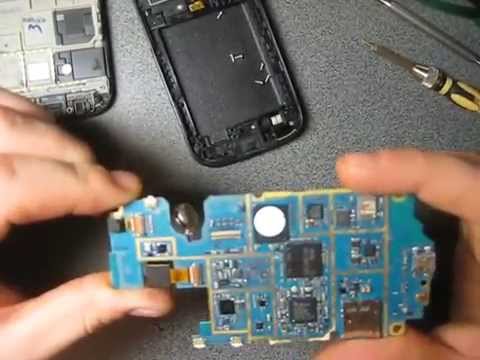
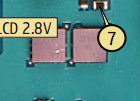






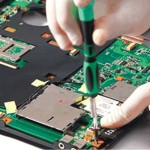 How to solder the micro usb connector on a tablet, phone, netbook, laptop with your own hands?
How to solder the micro usb connector on a tablet, phone, netbook, laptop with your own hands?